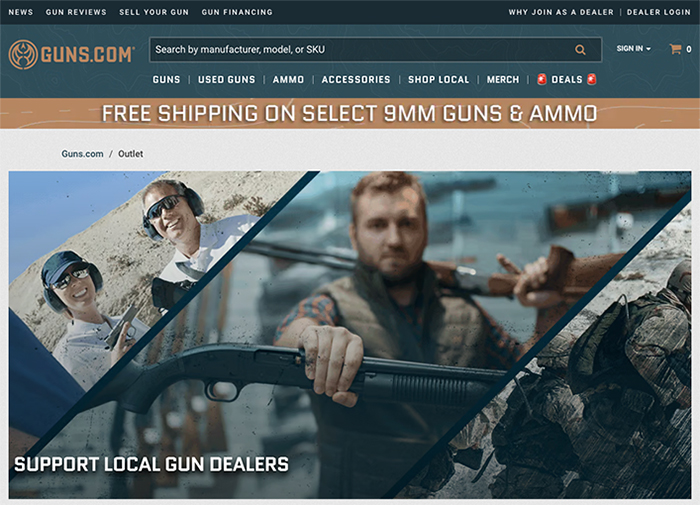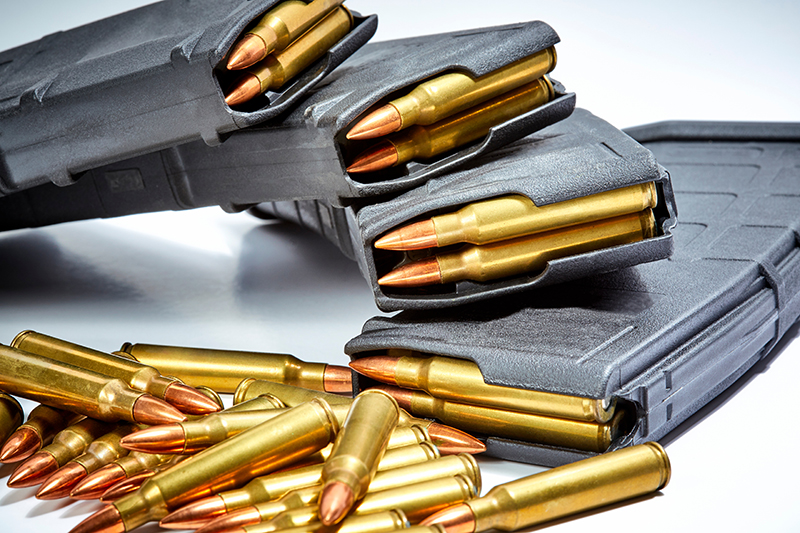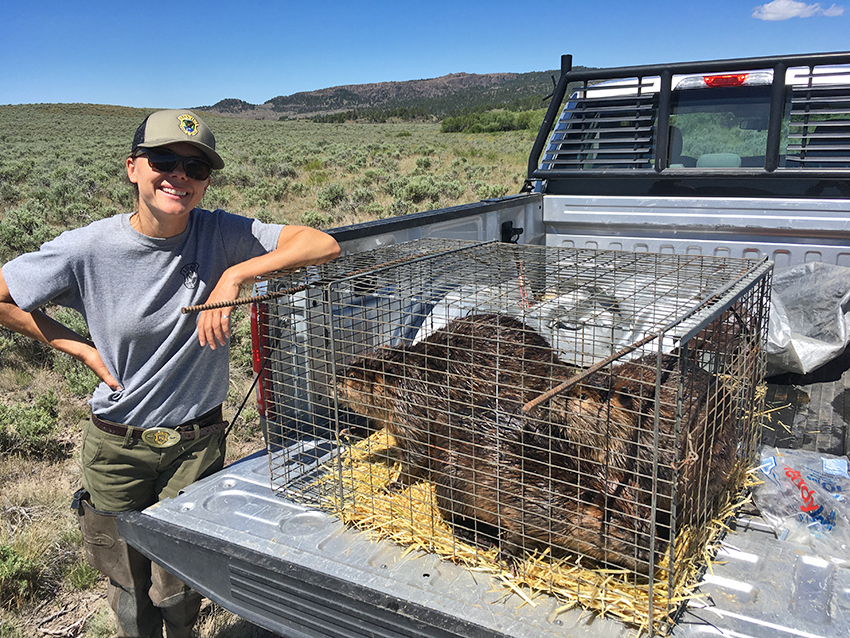Perspectives On Prices
Noone who reads Shooting Industry needs me to tell them prices on guns — and particularly ammunition — seem to have gone through the roof, nor that customers are absolutely incensed by it. I’m sure you’re more fed up than I am with having to explain why it’s not the fault of (most) gun shops.
Still and all, the better you can explain this to the customer, the less likely you are to lose their business because they think you’re price gouging them.
Looking Back
I pulled a couple of old book/catalogs off the shelf more or less at random: The Stoeger Shooter’s Bible from 1947, and the 1986 edition of Gun Digest.
Roughly three-quarters of a century ago, a 50-round box of ordinary .22 LR ammo carried an MSRP of 39 cents, and a box of .22 Short went for two bits. A 50-count box of .38 Special target wadcutters ran $1.91, and 50 rounds of 9mm FMJ cost $2.80. Others, .45 ACP “hardball” $3.09 per box, and $3.23 for match target .45 loads. The venerable .308 Winchester and .223 Remington/5.56mm NATO calibers were yet to be introduced.
A Colt .38 Detective Special revolver listed at $35.50, and the same company’s Government Model .45 Auto started at $53.76. The traditional home-defense long gun was the 12 GA shotgun. Today’s most popular models, the Remington 870 and the Mossberg 500/590 series, were not yet introduced, but the Ithaca Model 37 Featherlight pump gun could be had for as little as $70.95, and a 25-shell box of 00 buckshot to feed it was $1.68.
It seems to be a custom in our country to look at these old books, or a Sears Catalog from the years 1899 or 1900, and dream wistfully of prices long gone. However, it must be taken into context with contemporary average income. In the year 1947, the average American earned $3,000 per year. Gasoline cost less than a quarter a gallon — 23 cents to be exact.
“The better you can explain this to the customer, the less likely you are to lose their business because they think you’re price gouging them.”
Let’s move forward to 1986. Thirty-five years ago gasoline had nearly tripled from its 1947 cost, to 93 cents per gallon, and the average annual income had soared to $22,339. Ammo was $16 per 20-round box for .308 Winchester rifle rounds. 9mm ball ammo was listed at $22.50 per 50-round box. CCI’s highest-velocity .22 LR ammo was $5.42 for the same round count and .38 Special match wadcutter, $17.85.
The Colt catalog by 1986 listed the Detective Special at $399.95, and the blue steel Colt .45 Auto was now $491.95, though clones were starting to appear such as the Auto-Ordnance 1911-A1 at $324.95. The Ithaca Model 37 pump gun now started at $374. 12 GA buckshot, now selling in packs of five shells instead of 25, were $3.95 per pack.
Back To The Present
For context, according to the U.S. Census Bureau, the median household income in the U.S. was $67,521 in 2020, down 2.9% from 2019 ($69,560). Over the years, that Colt Detective Special had morphed into a new model, the (“new”) Cobra, with a current starting retail of $699, and the standard blue-steel Government Model .45 Auto now begins at $799 for the 1911 Classic model. The current incarnation of the Ithaca Model 37 begins at $1,199. (Ammo prices today? Bwahahaha … we’ll chase that fluttering butterfly before the column concludes.)
So — let’s crunch some numbers. A gun-shop customer in 1947 earned $57.69 per week. To buy the snub-nose Colt. 38 Special he would have to apply a little more than three days of his earnings from a five-day week. The .45 would have been pretty much his whole week’s salary, and the Ithaca shotgun well over a week’s worth of labor. By contrast, today the .38 snub would take a little bit less than three days of his weekly salary, only two thirds of his weekly paycheck instead of almost the whole thing, and the Ithaca shotgun less than a week’s salary instead of considerably more.
”The shortage has led gun owners who bought ammo a box at a time to now purchase by the case, and those who bought by the case to order multiple cases at a time, exacerbating the shortage amid accusations of hoarding.“
In other words, the equivalent guns cost proportionally less or no more than about the same as they cost nearly 75 years ago.
And now, to ammo costs. I was recently able to buy Sellier & Bellot .38 Special 148-grain wadcutter ammo for a bit under $25 a box, and where I am, writing in fall 2021, it’s about the best price I can get anywhere for 9mm ball as well.
Compared to 1986 prices, taken in context with inflation of virtually everything else in the intervening years, it’s a steal.
So, why the complaints? Introduction of “generic” practice ammo spearheaded by PMC in the latter part of the 20th century led to American ammo makers following suit. Federal Cartridge had its American Eagle brand, Remington had Rem-UMC, Speer Blazer Brass and the aluminum-case Blazer and Winchester had its USA “white box” line.
By 2000, a shooter could buy 100 rounds of 9mm white box ball for as little as $10. In the latter 2010s, 9mm ball that had been $25 for 50 was still available for as little as a sawbuck for essentially the same product. Hugely multiplied demand for calibers like 9mm and 5.56mm created “economies of production.” Basically, consumers had become spoiled.
Other Factors Impact On Price
There are, of course, other reasons for the recent and continuing ammo drought and higher prices:
• The pandemic affected ammo makers, with sick and quarantined employees unable to work the machines.
• Other economic forces caused price of raw materials to skyrocket, which manufacturers had to pass on.
• Literally boatloads of foreign-made ammo — indeed, by some accounts, whole shiploads — were stranded in ports overseas.
• The shortage has led gun owners who bought ammo a box at a time to now purchase by the case, and those who bought by the case to order multiple cases at a time, exacerbating the shortage amid accusations of hoarding.
• And, most recently, the most anti-gun president in American history banned the importation of ammunition from Russia in the name of punishing that country for the attempted assassination of one of its own political candidates. (Gonna be hard keeping a straight face when you give that explanation.)
I know you’ll remind your customers you’re no happier than they are about the current price/availability situation. Hopefully, being able to share the above points will take some of the sting out of the discussion.





